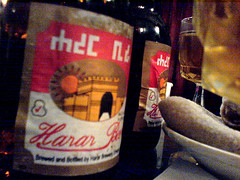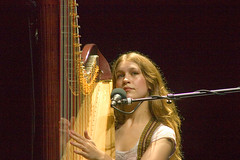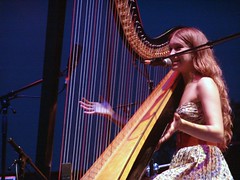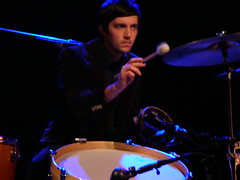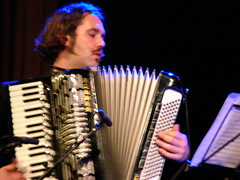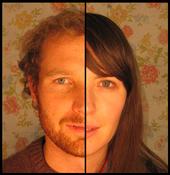Wow, you really CAN find anything on the internet, including a grainy picture of the Ethiopian beer I drank last night. It was great. I found this because I was composing a post about the Queen of Sheba. If Queen of Sheba wrote an autobiography it would be called "Why I Am The Best". I constantly change what the name of my autobiography would be but lately I am leaning towards "I feel bad...." because about half of my sentences start with a reason I feel bad. Not physically, here's an example. I feel bad I said/wrote that dumb thing. I feel bad I didn't call this person. Sooo...Queen of Sheba is now officially open and has picked up the pace a little bit, but I would still leave over an hour for your meal. That's OK because you can spend the time checking out the excellent decorations and listening to the groovin music. Last night they brought us a plate of honey cornbread to apologize for being slow and that is now the only kind of apology I will take, so be warned, if you fuck me over you had better start bakin'. They also have honey wine, which is crazy stuff. It's strong and tastes more like a liquor, so I would save it for after the meal. It doesn't really pair with the food. I chickened out on the raw meat again but soon I'll try it! The Doro Wat (chicken stew with hardboiled egg) is the bomb, as are the lentils and collard greens. Last night the lamb and beef was just so so. This rad website tells you about a typical Ethiopian meal in a charming way.
How a Dinner is Served in Ethiopia
A meal in Ethiopia is an experience. When you have dinner in an Ethiopian home or restaurant, you eat the tablecloth!
One or two of the guests are seated on a low comfortable divan and a mesab, a handmade wicker hourglass-shaped table with a designed domed cover is set before them. The other guests are then seated round the table on stools about eight inches high covered with monkey fur.
A tall, stunning woman with characteristically high cheekbones and soft skin, dressed in a shama, carries a long-spouted copper ewer or pitcher in her right hand, a copper basin (which looks like a spittoon) in her left hand, and a towel over her left arm. She pours warm water over the fingers of your right hand, holding the basin to catch the excess, and you wipe your hands on the towel that hangs over her arm.
The mesab is taken out of the room and returned shortly with the domed cover. She removes the dome and the table is covered with what looks like a gray cloth overlapping the edge of a huge tray. But it is not a "tablecloth" at all. It is the Injera, the sourdough pancake-like bread of Ethiopia. Food is brought to the table in enamel bowls and portioned out on the "tablecloth!" When the entire Injera is covered with an assortment of stews, etc., you tear off a piece about two or three inches square and use this to "roll" the food in-the same way you would roll a huge cigarette. Then just swoop it up and pop it into your mouth. Your host might "pop" the first little "roll" in your mouth for you. It takes a bit of doing to accomplish this feat but once you master it, you cannot help enjoy It.
Our server returns with individual long-necked bottles from which you drink Tej, an amber-colored honey wine. It is put on a little table close by. Or she may bring a weakly carbonated water or Tella, the homemade beer.
You learn that you are eating Chicken Wat and Lamb Wat-two peppery stews- Iab-cottage cheese and yogurt with special herbs giving it an acidic lemon flavor; and Kitfo-ground raw beef, which we are told is considered the dessert of the meal.
No other dessert is served. Coffee comes in on a tray in tiny Japanese cups served black with sugar.
Dinner is concluded with hand-washing again and incense is burned.
